#vintage knitting
Text
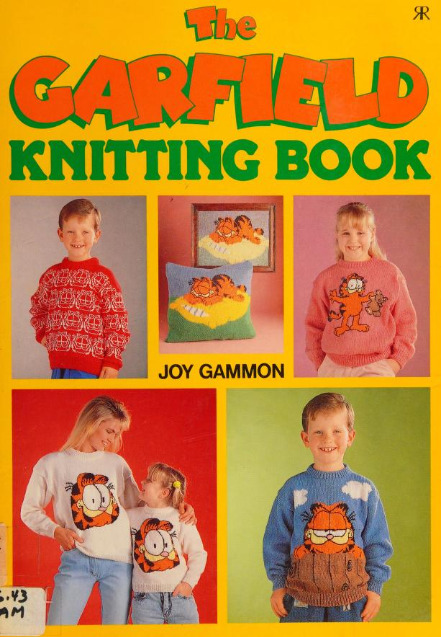
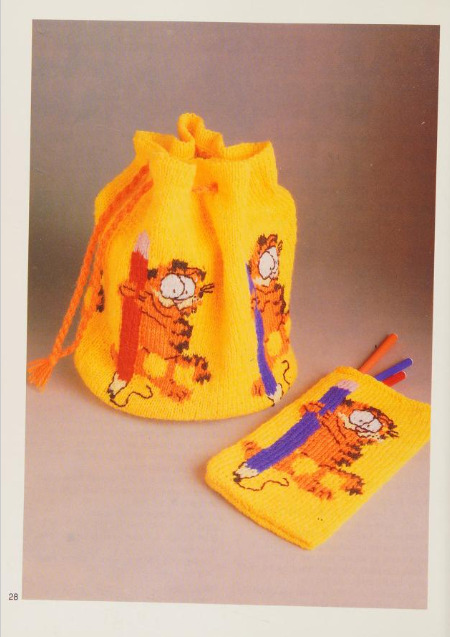
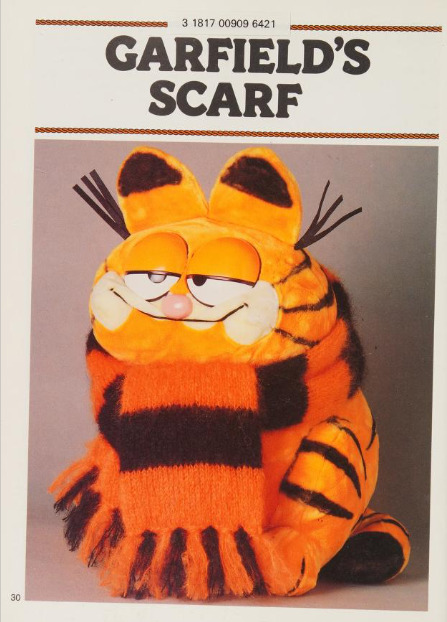
Patterns from The Garfield Knitting Book by Joy Gammon, 1990. The book can be read for free in entirety here, courtesy of the Internet Archive.
7K notes
·
View notes
Text
Where to find free patterns
Vintage patterns can be a great resource for all sorts of knits and because many are out of copyright they are free to access.
I have two websites I go to for free vintage patterns. They are freevintageknitting.com and freevintagecrochet.com. These are my first stop for newer vintage patterns because it collects old out of print pamphlets and makes them easy to read. The sites also have information on discontinued yarn, hook and needle conversion and more. They are a great start to historical (or vintage) knitting.
For older books you can head to archive.org/details/knittingreferencelibrary. Books in this collection are simply photocopies so you would need to translate the patterns yourself. But it does contain Victorian to WW 2 books.
Blogs and sites like Ravelry are also a good place to start looking for patterns. There are many free versions of vintage patterns and paid for ones can be helpful because the authors will do the work of updating the needles, yarn and pattern wordage.
When working with vintage or antique patterns there are a few things to keep in mind. One is stitch definitions — always check what the pattern book describes as each stitch you’re making (this is very important for crochet!) Another one is to convert the needle size and find a good yarn substitution.
Before you start transcribing or picking a new yarn, make sure it can fit you and if you’ll want to try grading. Vintage sizes are different than modern ones and it is best to use a guide to get an estimate.
Here’s a quick chart with some measurements for vintage sizes https://purplekittyyarns.com/vintage-body-measurements-size-chart.
The next step is to start transcribing and depends on how old the pattern is. The older the pattern the more likely you'll want to read it through and decide if you need to transcribe it.
This can include typing up the pattern in a way which makes sense for you or to map it out on a chart. This can take a few tries and I like to start with smaller and less complicated patterns. Occasionally you might not even need to transcribe it.
Next you’ll need to find the yarn substitution which will give you needles as well. If the pattern includes a gauge use that as a guideline to find a substitution. For a more in depth read visit https://knitpal.com/blogs/knitpal/how-to-substitute-yarn-for-vintage-knitting-patterns.
And once you've found the size you'll need, made the pattern readable and found your replacement you're ready to start knitting. Happy cast on!
#knitblr#vintage knitting#vintage crochet#crochetblr#crochet#knitting#knitters of tumblr#knittersofinstagram#crochet pattern#crochetersofinstagram
1K notes
·
View notes
Text
"Are you wearing the C-"
"The Cesare the Somnambulist sweater from Das Kabinet des Doktor Caligari (1920) dir. Robert Weine? Yeah, I am"
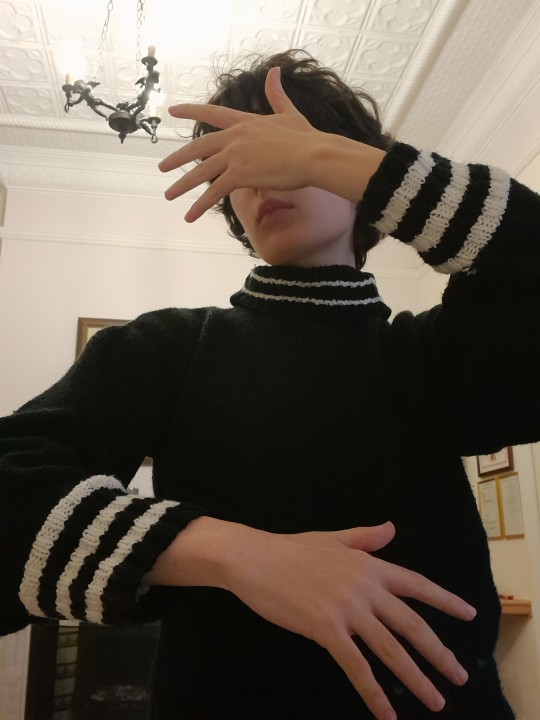
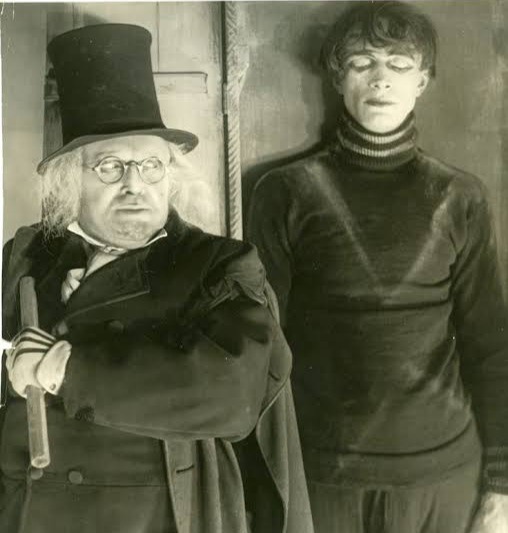
#fun fact: I knitted this based on a pattern from 1918!#the cabinet of dr. caligari#german expressionism#cesare the somnambulist#knitting#vintage knitting#crafts#knitwear#ootd#silent movies#yarnblr
63 notes
·
View notes
Text
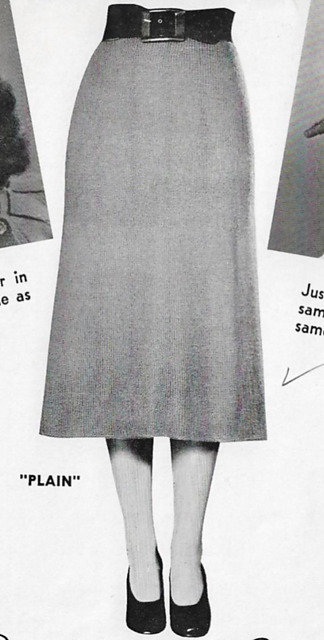

I knit this skirt! and belt!
46 notes
·
View notes
Text

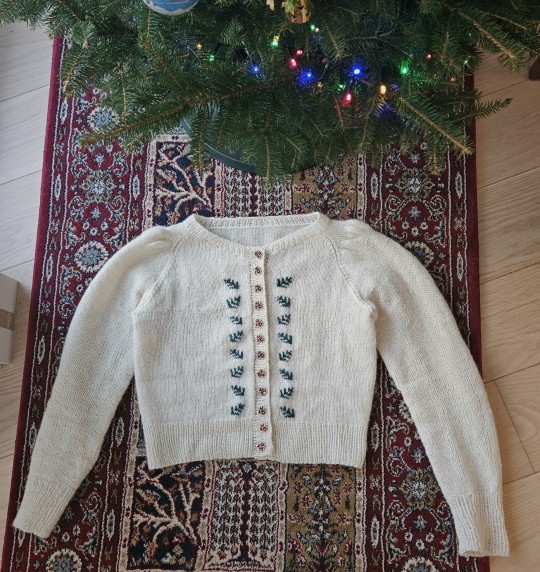
This year's christmas knit! The "Juniper Jacket" knit in Ask "Fløte" and "Du grønne glitrende", with "Bouquet"-buttons, all from Fabel Knitwear.
A 1930s and 1940s inspired jacket with festive colorwork.
I had to go up two sizes so that it would fit me and my guage. I am very pleased with it, but I learned that I have to loosen up when i knit. Definitely a New Years knit-resolution!
Merry christmas!
75 notes
·
View notes
Text


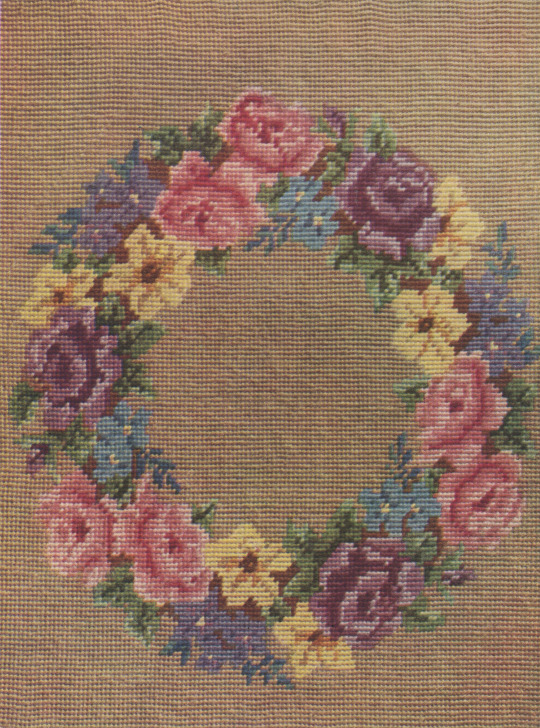






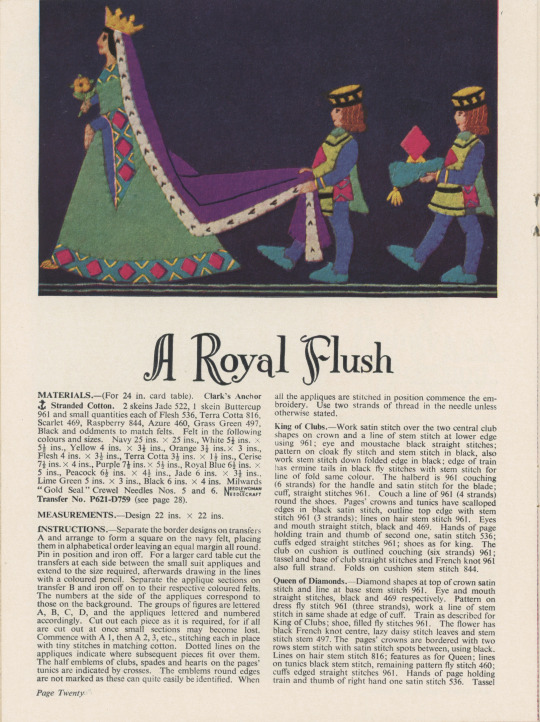
Needlewoman and Needlecraft No. 44 (Oct 1950) (UK)
Pages 11 – 20
#vintage knitting#knitting magazine#knitting#vintage crafts#1950s#1950s fashion#cross stitch#embroidery#vintage embroidery#vintage needlework#needlepoint#crochet#vintage crochet#needlewoman and needlecraft#needlewoman and needlecraft 44
31 notes
·
View notes
Text

Bernat 1956
#year: 1956#1956#1950s#decade: 1950s#1950s vintage#1950s style#1950s fashion#bernat#Bernat fashions#vintage knitting#vintage sweaters#bernat knit#vintage style#vintage fashion#vintage knitwear#the past#yesterdays#vintage model
25 notes
·
View notes
Text
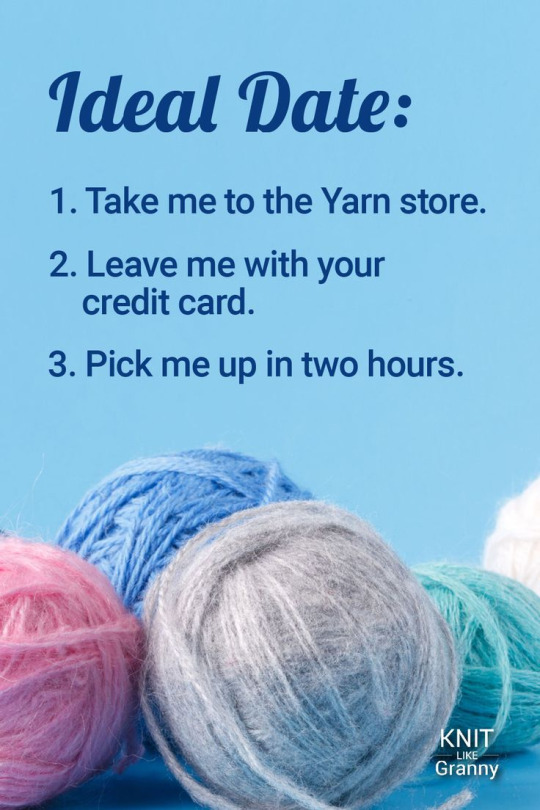
#knitting machine#machine knitting#vintage knitting#crafts#yarn crafts#yarnblr#craftblr#knitblr#knitting inspo#vintage#knitting#crochet#knitters of tumblr#crocheting#crocheters of tumblr#yarn#yarnaddict#fiber crafts#fiber arts#crafting#hand crafted#handmade
20 notes
·
View notes
Text


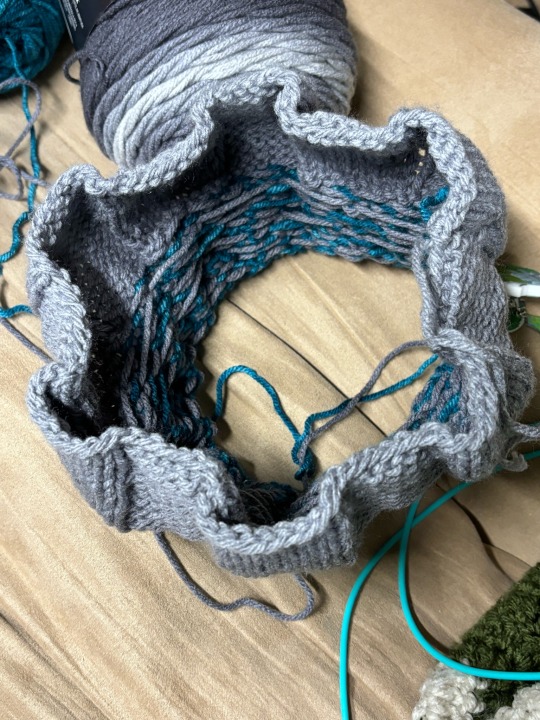
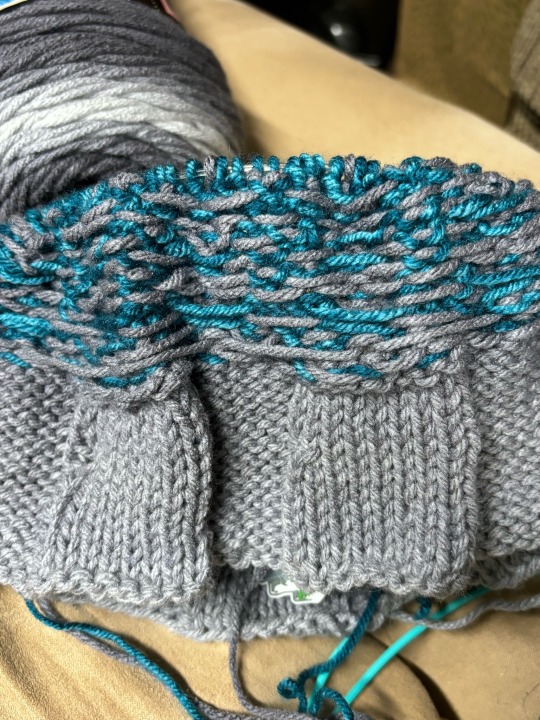
chat I’ve got issues
I finished a project so that means I get to cast on another and did this! it’s a vintage… something pattern (theoretically a bag of sorts, but the directions say to make it to the size of “the carton”?? but that has yet to be explained by either the pattern itself and/or uncle google)
and, also obviously, the first time I’ve ventured into color territory (as seen by the floaty guts (it took me a few rows to figure out how to anchor properly)) and I’m kinda,, goblin? holding?? my yarn?? which is okay but I’m not a fan of so I have one of those yarn rings on its way in the mail to hopefully let me knit the way I’d like
any tips/comments/resources be v helpful 🤗 I’ve been mostly using Nimble Needles on YouTube for help
#captains log#knitting#yarn#knitters of tumblr#knitblr#acrylic yarn#knit#color work#stranded colorwork#fair isle#fair isle knitting#vintage knitting#grey#turquoise#vintage pattern
48 notes
·
View notes
Text

#vintage gay#vintage men#cable knit#knitwear#knitting#wool sweater#jumper#wool jumper#men in jumpers#rollneck#rollkragenpullover#menswear#mens style#wool#turtleneck#vintage knitting#men's cable knit#irish knitting
74 notes
·
View notes
Text
HEre is an incredibly niche pet peeve I’ve discovered that I have and im going to rant about it
so i’ve recently gotten into vintage knitting thanks in large part to retro claude on youtube, she makes great content on vintage clothes and how she manages all that with her disability, its very helpful and nice and i have learned a lot! one of the things being that in a lot of vintage patterns for knitting, (1930′s and 40′s specifically) the yarn used is a 3 ply yarn. Now in modern day, the vast majority of our yarn is 4 ply. 4 ply is heavier and thicker, so if you’re working from a pattern your gauge will be off and it wont fit right unless you do a whole lot of math.
However! although it is not usually 3 plies (strands of fiber that get twisted together, so 3 ply is 3 strands and 4 ply is 4, so on and so on) yarn for babies is usually very similar! It’s a lot less heavy than worsted weight 4 ply yarn, and some baby yarns are even 3 ply! they are also quite cheap and easy to find, as most 3 ply yarns are not very easily accessible.
NOw heres wehre i get mad
BABY YARN IS ALL FUCKING PASTEL
not only is this infuriating for me as a knitter who wants my beautiful jewel tones and rich earth tones and dark greens and bright fun colors, its also not great for babies cause guess what???
BABIES CANT SEE FUCKING PASTEL
so many baby stuff is brightly colored *on purpose* so they can learn what color is. Toddlers who live in a minimalist beige/pastel house color in browns and greys cause THATS WHAT IT LOOKS LIKE!!!
so in conclusion, please make more baby yarn that is not pastel because pastels are nice on occasion but not all of the time and I want more soft light cheap easily machine washable yarn in colors I will actually wear
#knitting#vintage knitting#this is so niche im sorry#i also havent fact checked the whole babies not seeing pastel thing so if that is wrong that's my bad#but like even if babies *can* see pastel?#I think babies deserve more colors than the same shades of blue and pink and yellow and maybe a purple with a little more saturation#look i dont plan on having kids#at least not for a very very long time#but if i did have kids im not wrapping that bitch up in ANOTHER soft magical unicorn blanket uwu#you better believe that will be a soft magick unicorn blanket but the type of unicorn with the lion's tail and the beefy hind legs#and the earth tones and the damp smell of the forest?#also vintage knits would be fun in more colors that are more true to vintage times#and also my preferred color palette
87 notes
·
View notes
Text
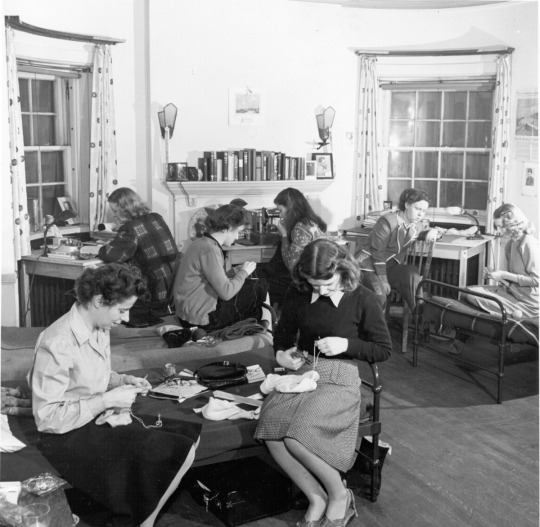
McGill University students knitting, c.1940s.
163 notes
·
View notes
Text
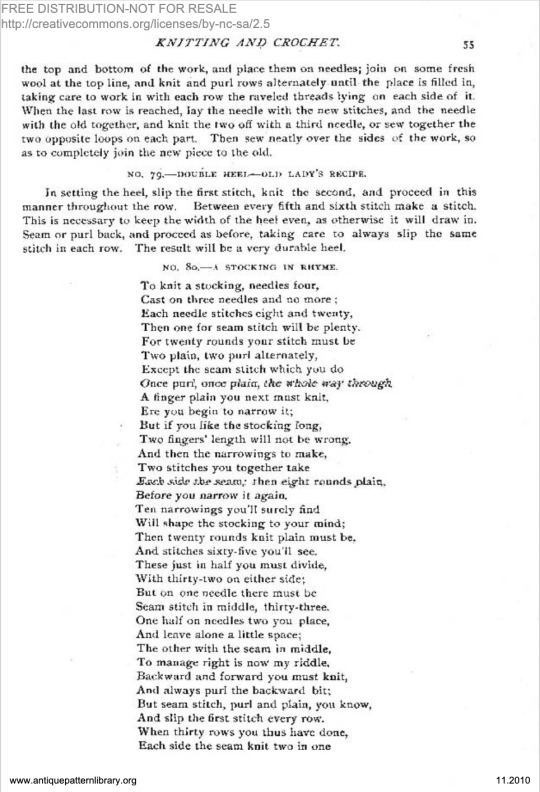


For those of you who are interested in vintage knitting or sock knitting, I stumbled across this pattern for a stocking pattern in rhyme! There’s no mention of yarn weight or tension, so it's definitely not for the unexperienced or undetermined.
The pattern is 'No 80. - A Stocking in Rhyme', Knitting and Crochet: A Guide to the Use of The Needle and The Hook, ed. Jenny June (1886), pg 55.
The typed up pattern is below the read more.
To knit a stocking, needles four,
Cast on three needles and no more;
Each needle stitches eight and twenty,
Then one for seam stitch will be plenty.
For twenty rounds your stitch must be
Two plain, two purl alternately,
Except the seam stitch which you do
Once purl, once plain, the whole way through
A finger plain you next must knit,
Ere you begin to narrow it;
But if you like the stocking long,
Two fingers length will not be wrong.
And then the narrowings to make,
Two stitches you together take
Each side the seam; then eight rounds plain.
Before you narrow it again,
Ten narrowings you'll surely find
Will shape the stocking to your mind;
Then twenty rounds knit plain must be,
And stitches sixty-five you'll see.
These just in half you must divide,
With thirty-two on either side;
But on one needle there must be
Seam stitch in middle, thirty-three.
One half on needles two you place,
And leave alone a little space;
The other with the seam in middle,
To manage right is now my riddle.
Backward and forward you must knit,
And always purl the backward bit;
But seam stitch, purl and plain, you know,
And slip the first stitch every row.
When thirty rows you thus have done,
Each side the seam knit two in one
Each third row, until sure you feel
That forty rows are in your heel.
You then begin the heel to close;
For this, choose one of the plain rows;
Knit plain to seam, then two in one,
One plain stitch more must still be done.
Then turn your work, purl as before
The seam stitch — two in one, one more;
Then turn again, knit till you see
Where first you turned, a gap will be,
Across it knit together two,
And don't forget one plain to do;
Then turn again, purl as before,
And sew till there's a gap no more.
The seam stitch you no longer mind,
That, with the heel, is left behind.
When all the heel is quite closed in,
To knit a plain row you begin,
And at the end you turn no more,
But round and round knit as before.
For this, on a side needle take
The loops the first slip-stitches make;
With your heel needle — knit them plain,
To meet the old front half again.
This on one needle knit should be,
And then you'll have a needle free
To take up loops the other side,
And knit round plain, and to divide
The back parts evenly in two;
Off the heel needle some are due:
Be careful that you count the same.
On each back needle, knit round plain;
But as the foot is much too wide,
Take two together at each side,
On the back needle where they meet
The front to make a seam quite neat.
Each time between knit one plain round,
Till stitches sixty-four are found;
And the front needle does not lack
As many as on both the back.
You next knit fifty-six rounds plain,
But do not narrow it again;
‘Twill then be long enough, and so
Begin to narrow for the toe.
Your long front row knit plainly through,
But at its end knit stitches two;
Together and together catch
Two first in the next row to match;
Then to the other side knit plain
Half round, and do the same again;
'That is, two last together catch,
Two first in the front row to match.
At first knit four plain rounds between,
Then two, then one, until 'tis seen
You've knit enough to close the toe;
And then decrease in every row,
Until to stitches eight you're bronght,
Then break the thread off--not too short-
And as these stitches eight you do,
Each time your end of thrend pull through;
Then draw up all to close it tight,
And with a darning needle bright,
Your end of thread securely run,
And then, hurrah! the stocking's done!
36 notes
·
View notes
Text
So I found this knitting book at the thrift store yay maybe I'll finally get the hang of knitting and make some winter things for my little one…

Wait a second…whatcha got there Bob?
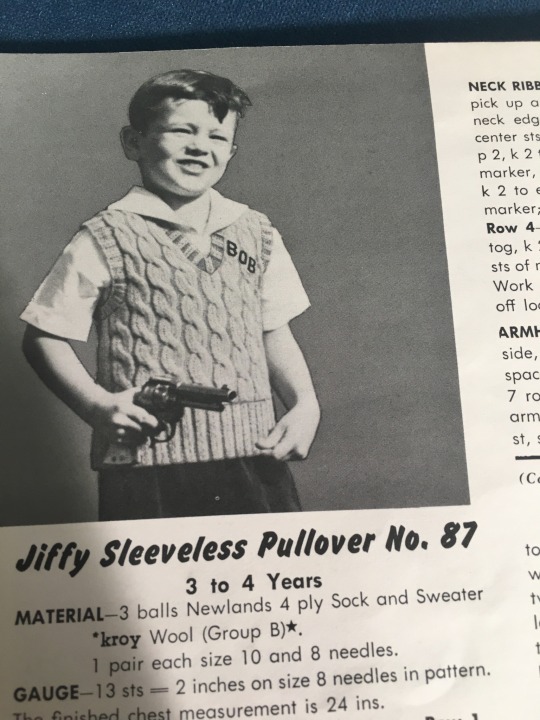
A gun!?!
(I know it's probably a toy but still looks jarring to me a modern Canadian lol)
24 notes
·
View notes
Text

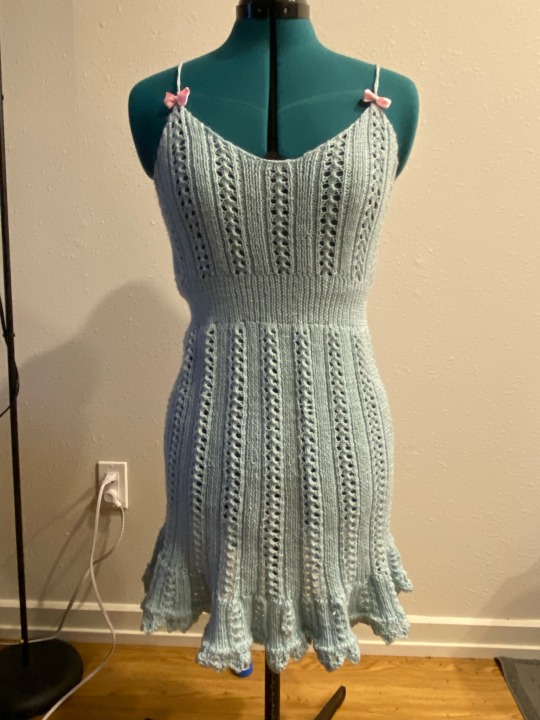
I finished my knit 1942 underdress! I sized up the needles a little and it is very very stretchy, i kind of wish i had used the suggested size but its very cozy. I shortened the waist slightly and added a ruffled hem (based on knitty’s “unmentionables” lace edge pattern)
170 notes
·
View notes
Text



Another Christmas‐knit! The "Fuzzy Pixie Hood" knit in strands of Athena and Mohair Silk in the color "Juvel", tied together with a "Livia Button" from Fabel Knitwear.
A 1940s inspired hood, with a Norwegian fjord and winter landscape in the background.
Still a very merry Christmas to all!
21 notes
·
View notes